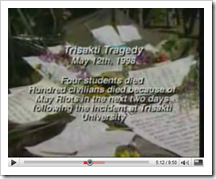Even though I left academia recently, I try to keep in touch with the academic community and keep up with academic publications in the field. Because of this, I still accept most requests from journal editors to review their contributions. What annoys me however, is the fact that I do not have access to such journals anymore. My current employer has subscriptions on some journals, but definitely not on all the ones I am interested in. Considering the subscription fees of most journals I can’t blame them.
Today I read an interesting article in the Times Higher Education on the costs of publishing and… the actual costs of peer reviewing. It does make you wonder about the current system of peer reviewing, especially if you don’t have access to the articles you review. I used to agree with the observation of the THE that the advancement of the academy’s collective body of knowledge was reward enough for the time and effort put into peer review and therefore academics needn’t get paid for doing this. But now I see what we are missing out on, I am not so sure anymore:
But a new report has attempted to quantify in cash terms exactly what peer reviewers are missing out on. It puts the worldwide unpaid cost of peer review at £1.9 billion a year, and estimates that the UK is among the most altruistic of nations, racking up the equivalent in unpaid time of £165 million a year.
The report says there would be a “significant transfer” of funds to academics if peer reviewers were paid. But such a move would drive up journal prices, with the estimated “breakeven price” of a major discipline journal jumping 43 per cent, leaving libraries with a bigger bill.
My first reaction to this was that there must be other possibilities with all the new technologies available. And there are. The report also shows that a move to electronic-only publishing would bring a fall of about £1 billion (12 per cent) in global costs. A system of author-pays open access publishing could add another saving of £556 million. I don’t have to get paid to review articles. But some changes to the system would be appreciated.




